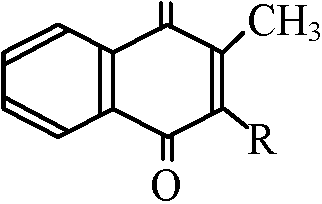(Upload on April 17 2023) [ 日本語 | English ]
Mount Usu / Sarobetsu post-mined peatland
From left: Crater basin in 1986 and 2006. Cottongrass / Daylily
HOME > Lecture catalog / Research summary > Glossary > Nutrient
Mineral nutrition (無機代謝物, 無機養分, 無機栄養)Mineral nutrient (nutritional mineral, 無機栄養素)→ a plant consists of much water composed of C, H and O → C, O, H are not dealt with nutrient content
Atoms in living organisms Major elements (多量必須元素)= macronutrient= (metal) K Ca Mg + (non-metal) P N S |
Trace elements (微量必須元素)= micronutrient= (metal) Fe Cu Mn Zn Mo Co V Na Ga + (non-metal) B Si Cl I Beneficial elements (有用元素)= (metal) Al Sr Rb + (non-metal) Se |
|
= Macronutrient N (nitrogen)
1802 de Saussure
Forming amino acids, amino-enzymes, nucleic acids, chlorophyll, alkaloids, and purine bases P (phosphorus)
1839 Liebig Forming ATP, RNA, DNA, phytin and certain enzymes K (potassium)1866 Bimer & Lacanus Maintaining the water staus in plants via operating turgor pressure and opening and closing stomata |
Ca (calcium)1862 Strohmann
Maintaining cell integrity and membrane permeability Mg (magnecium)1875 Boehm Forming chlorophyll S (sulfur)1866 Bimer & Lucanus
Promoting protein synthesis |
|
= Micronutrient Fe (iron, Fe++, Fe3+)1843 Gris Mn (manganese)
1849-51 Salm-Hgorstmar: growing Avena sativa without Mn → gray speck disease (灰斑病) Zn (zinc)
1869 Raulin / 1907 Javillier: showing that Aspergillus niger requires Zn for the grwoth B (boron)
1910 Agulhon: the growths of Raphanus sativus, Avena sativa (oat) and Triticum aesticum (common wheat) are promoted by the contamination of B in water culture |
Cu (copper, Cu++, Cu+)
1925 McHargue
1927 Bortes, 1928 Roberg, 1935 Steinberg, 1939 Mulder: discovered that fungi and bacteria required Cu for their growths Mo (molybdenum, MoO42-)
1930, 1936 Bortels: Azotobacter, nitrogen-fixing fungus Cl (chlorine)1955 Boyer, Carton, Johnson & Stout |
Al (aluminium, or aluminum)Se (seleniumm, セレン)1933 Robinson: Se absorbed by plants1934-35: Hurd-Karrer: growth failure (chlorosis) due to exess Se 1966 Ganji: 0.02-2.0 ppm in plant dry weight |
Na (natrium, or sodium)Si (silicon) |
| = major essential elements or traces |
| Vitamin | Coenzyme | Metabolism | |
| a | B1 (Thiamin) | TPP (Thiamin-pyrophosphate) DPT (diphosphothiamin) | carbohydrate metabolism |
|---|---|---|---|
| c' | B2 (Riboflavin) | FMN, FAD | redox, biological oxidation |
| B6 (Pyridoxin) | PLP (pyridoxal phosphate) | amino-acid metabolism | |
| Nicotinamide (Niacin) | NAD, NADP | biological oxidation | |
| Panthotenic acid | CoA | lipid metabolism | |
| Biotin (H) | Biocytin (enzyme-protein complex) | CO2 transfer, lipid and sugar metabolism | |
| Folic acid (M) | H4-folate | C1-compound transfer → nucleic acids, amino acids | |
| B12 | Cobamide coenzyme | intramolecular rearrangement of H → nucleic acids, lipids | |
| Lipoic acid | Lipomide | Acyl transfer α-KG oxidation → glucides |
|
Ex. Rat liver (μmol/g wet wt)
NAD + NADP = 0.88
5 steps: |
Folic acid (Vitamin B complex, 葉酸)
Pteridine-P-aminobenzoic acid-Glutamic acid
CH2OH-CH(NH2)-COOH (Serine) + FH4  Vitamin K: lipophilicity (脂溶性)
Vitamin K: lipophilicity (脂溶性)
relted to electron transfer Ex. ubiquinone (UQ)
R: -H, menadione (2-methyl-1, 4-naphtoquinone) n = 3: vitamin K1, =5-8: K2 series (=6: K2(30), =7: K2(35)) R: -OH, phthicol |
HistoryThe born of agriculture → emergence of agricultural pests10,000 BP: The born of agriculture [cause] increase in population + food insufficiency (glacial age → cooling of the earth for 1,000 years = difficulties in coursing and picking) 5,000 BP: the develpment of agricultural cultures Green revolution (緑の革命)= Third Agricultural Revolution, ≈ seed-fertilizer revolutionA period of technology transfer initiatives that saw increased crop yields and agricultural production
high-yielding varieties of crops 1943 Launch of MAP (the Mexican Agricultural Program) by the Rockefeller Foundation and the Mexican government
1944 high-yield wheat breeding by Borlaug in Mexico |
1960 International Rice Research Institute, IRRI (国際イネ研究所)
Philippines, financially supported by the Rockefeller Foundation and the Ford Foundation
Mexico, financially supported by the Rockefeller Foundation and the Ford Foundation ExperimentsHyponex medium (ハイポネックス)Hyponex (powder type): NPK = 6.5:5:19 ProblemsWater pollution (on skislope) |